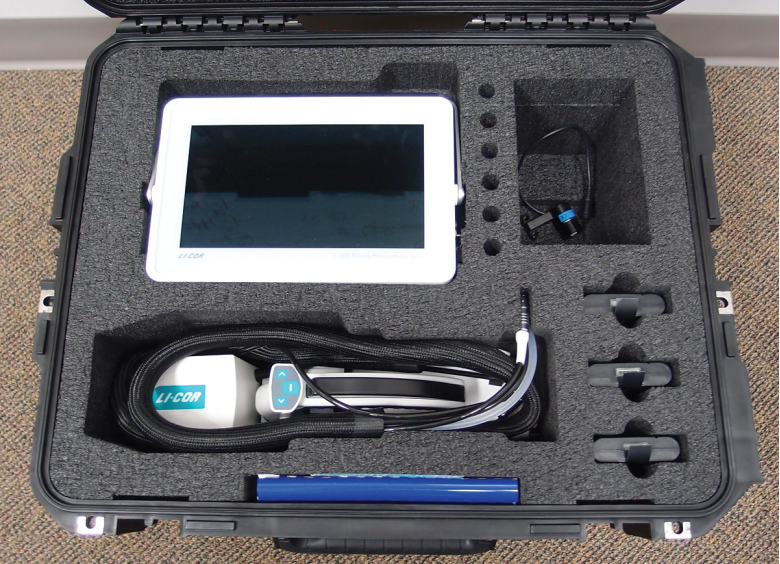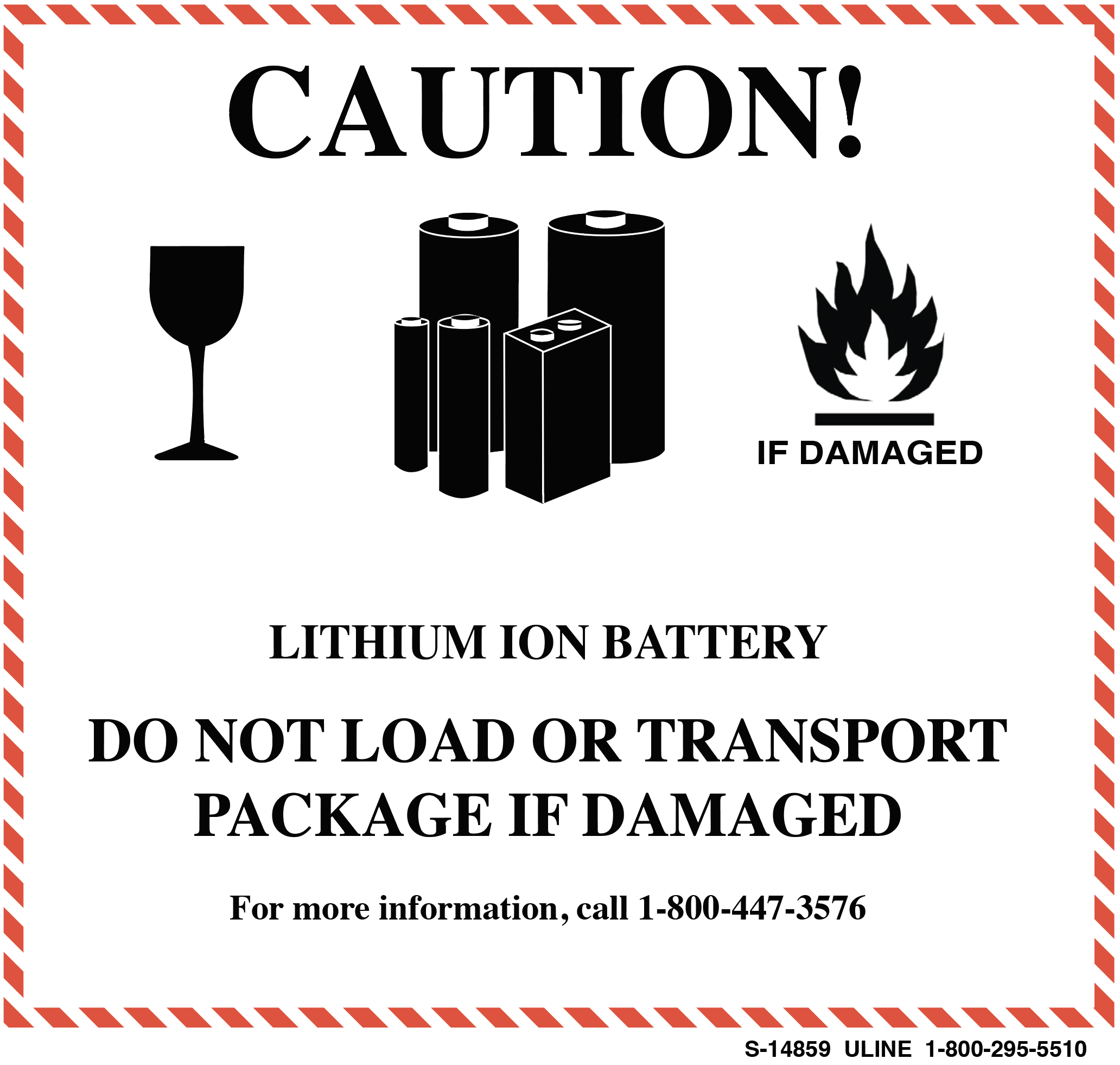Printable PDF: Shipping Recommendations
(LI-6800_Shipping_Tips_TTP45.pdf)
This content as a pdf that can be saved to your computer or printed.
We have some recommendations for packaging the LI-6800 Portable Photosynthesis System for shipping. While there are no foolproof techniques to completely prevent any damage, there are some steps that can be taken to reduce the chances of damage.
Utilizing the black suitcase(s) with foam insert and the double-walled cardboard box are two of the most important steps to take. While there is some room for variation depending on which components are being shipped, the basic layout remains the same. To successfully pack the instrument into the case, refer to the picture below for component placement.

Preparing the LI-6800 for shipping
- Empty the chemical columns.
- This will reduce shipping weight and strain on the console, and ensure that water from the humidifier column does not enter the console.
- Remove the CO2 cylinder from the holder.
- Do this even if it is empty. If you remove a charged cylinder, it will be noisy when the gas vents.
- Leave the chamber ‘parked’.
- This will prevent the leaf chamber gaskets from becoming compressed.
- Place the console in the shipping case.
- Disconnect the cables and air tube. Make sure the scrub tubes face the back of the case, with the handle folded down.
- Place the sensor head in the gray case.
- Disconnect the head cable and air tube. The chamber can remain attached to the sensor head.
- Secure the case latches.
- Use a secondary closure method to ensure that the case stays closed. For example, use zip ties to secure the lid.
Need to ship to LI-COR?
- Contact us for a Return Materials Authorization (RMA) number so we know to expect your instrument.
- Phone 402-467-3576
- In the U.S. and Canada: 1-800-447-3576
- Email: envsupport@licor.com
- Or, contact your local representative.
- Be sure to include:
- The console, sensor head, head cable, and any components that need a calibration (i.e., light source, light sensor)
- Don’t send:
- Batteries, other cables, power supplies, battery chargers, or extra chambers, unless you want us to examine them.
- Back up your data.
- We do not routinely save a copy of the data before we start working on the instrument, nor do we delete files from a customer’s instrument. But if you send us a console with data stored on it and nowhere else, then you might lose it. So please, send us only files you can afford to lose.
Shipping lithium-ion batteries
Many new LI-COR instruments include removable lithium-ion batteries. We recommend that you do not ship these batteries when shipping your instrument to the factory.
Effective April 1, 2016, new shipping requirements were issued regarding the shipment of lithium-ion batteries. There are three separate shipping scenarios described below: 1) Batteries are packaged with the original equipment, 2) Additional batteries (quantity of two or fewer) are packaged without the original equipment, and 3) Additional batteries(quantity of three to ten) are packaged without the original equipment.
Shipping batteries with equipment
When packed with equipment, lithium-ion batteries (quantity 1-3) are classified as UN3481, packing instruction 966, section II, and require that the package be labeled with the lithium-ion battery handling label (see Figure 1‑2). A full-size copy of this label that can be printed and affixed to the package is available from licor.app.boxenterprise.net/v/Li-Ion-Shipping-Label.
Shipping batteries without equipment (2 or less)
When packed without equipment, lithium-ion batteries (quantity 1-2) are classified as UN3480, packing instruction 965, section II, and require:
- Not declared as Dangerous Goods.
- One or two batteries.
- Shipper’s Declaration: Quantity and type of packing - Packing: 1 Fiberboard Box, Quantity: 0.46 kg weight per battery.
- Label package with lithium-ion battery handling label; a copy is available from licor.app.boxenterprise.net/v/Li-Ion-Shipping-Label.
- Label package as Cargo Aircraft only.
- Airway bill states “Lithium-ion batteries in compliance with Section II of PI 965”.
- Only one package per consignment.
Shipping batteries without equipment (3 to 10)
When packed without equipment, lithium-ion batteries (quantity 3-10) are classified as UN3480, packing instruction 965, section IB, and require:
- Is declared as Dangerous Goods (Proper shipping name: UN3480 Lithium Ion Batteries, Class 9)
- Three to ten batteries
- Shipper’s Declaration: Quantity and type of packing - Packing: 1 Fiberboard Box, Quantity: 0.46 kg weight per battery
- Label package with lithium-ion battery handling label; a copy is available from licor.app.boxenterprise.net/v/Li-Ion-Shipping-Label.
- Label package as Cargo Aircraft only
- Label package with Class 9 hazard label
- Airway bill states “Lithium-ion batteries in compliance with Section IB of PI 965”
Notes
- These packages must be handled with care. A flammability hazard exists if the package(s) is damaged.
- If package is damaged in transport, it must not be loaded until the condition of the contents can be verified. The batteries contained in the package must be inspected for damage and may only be repacked if they are intact and protected against short circuits.

